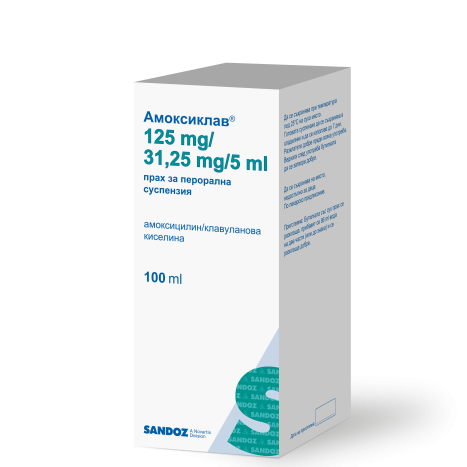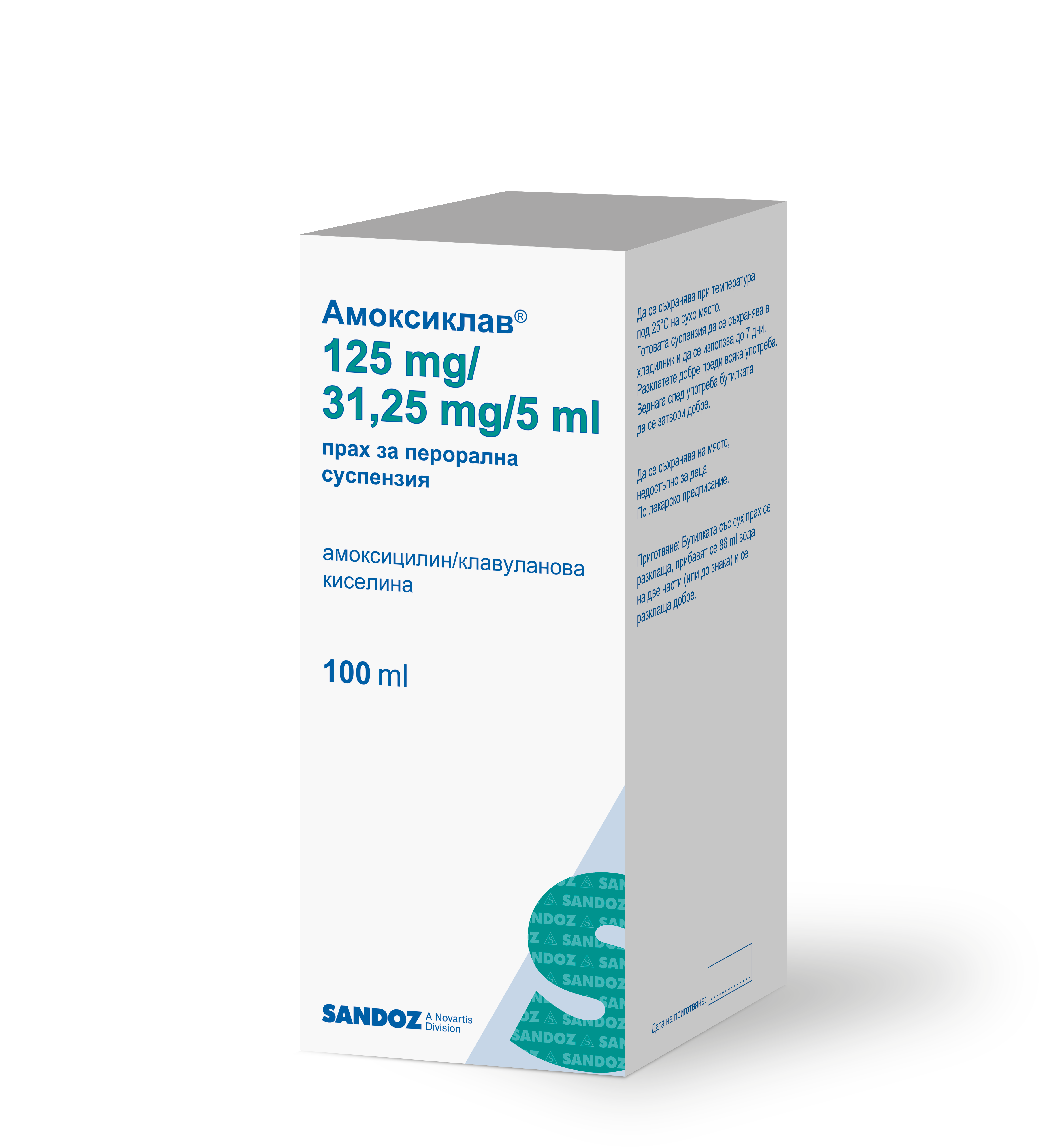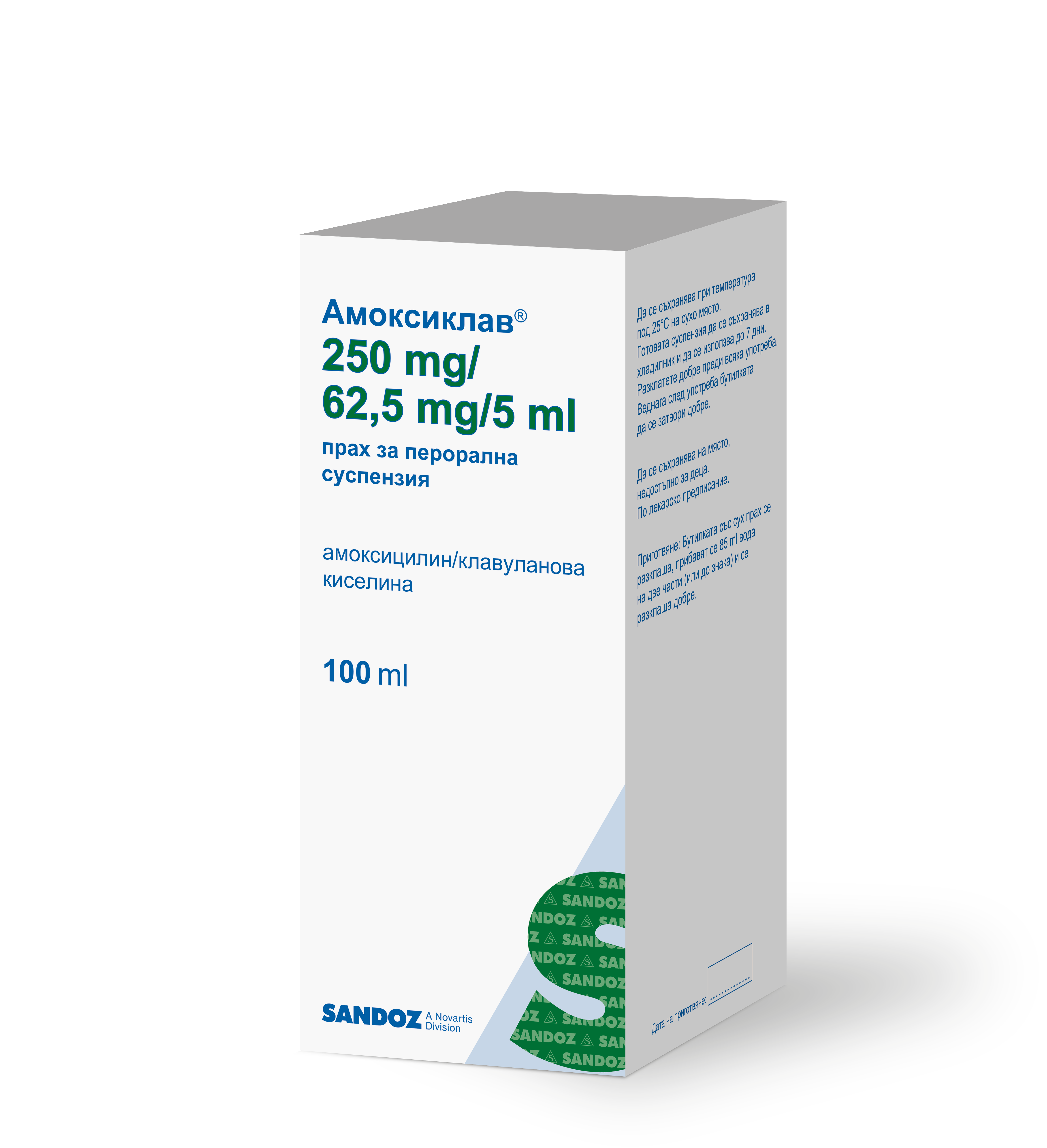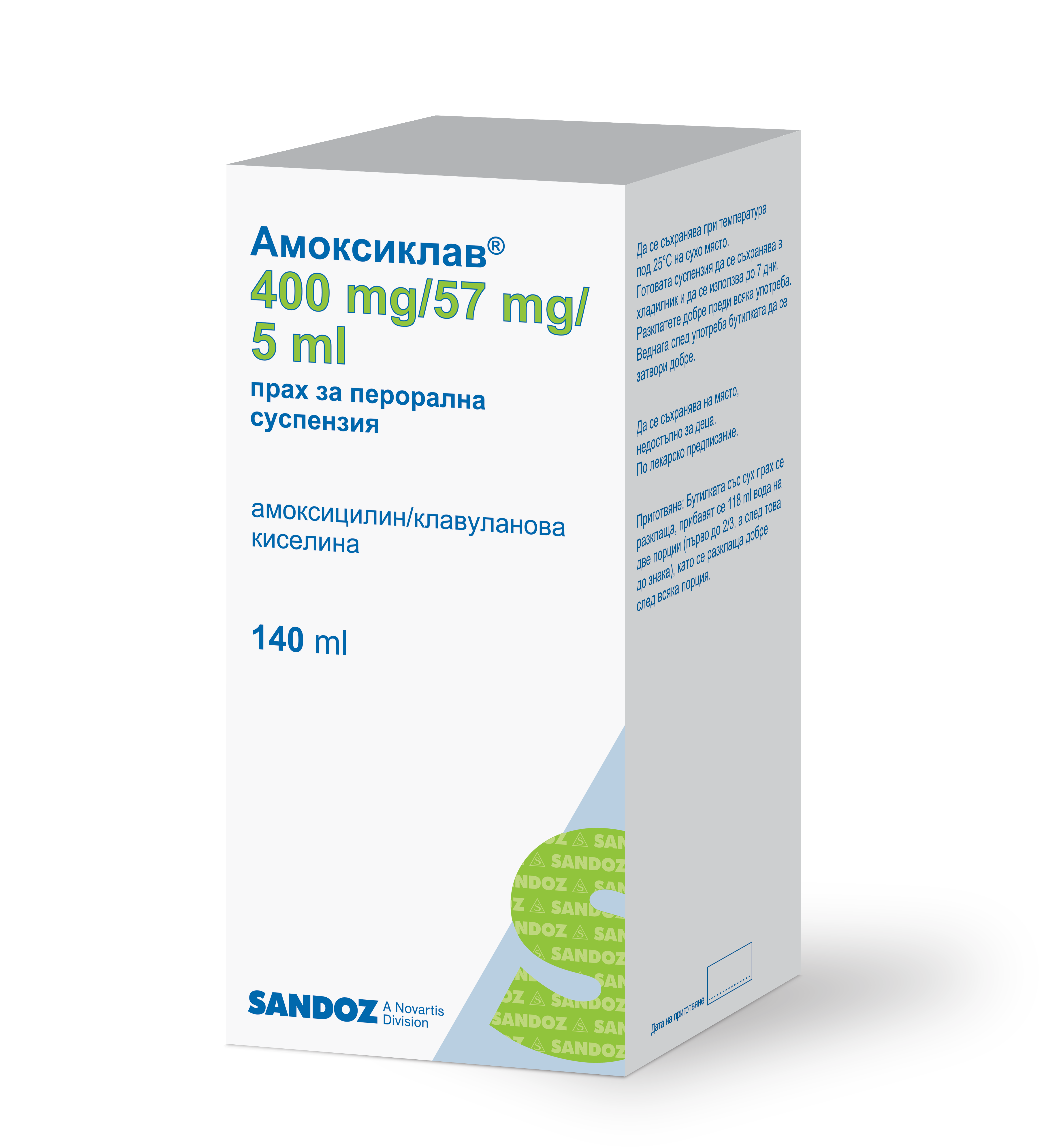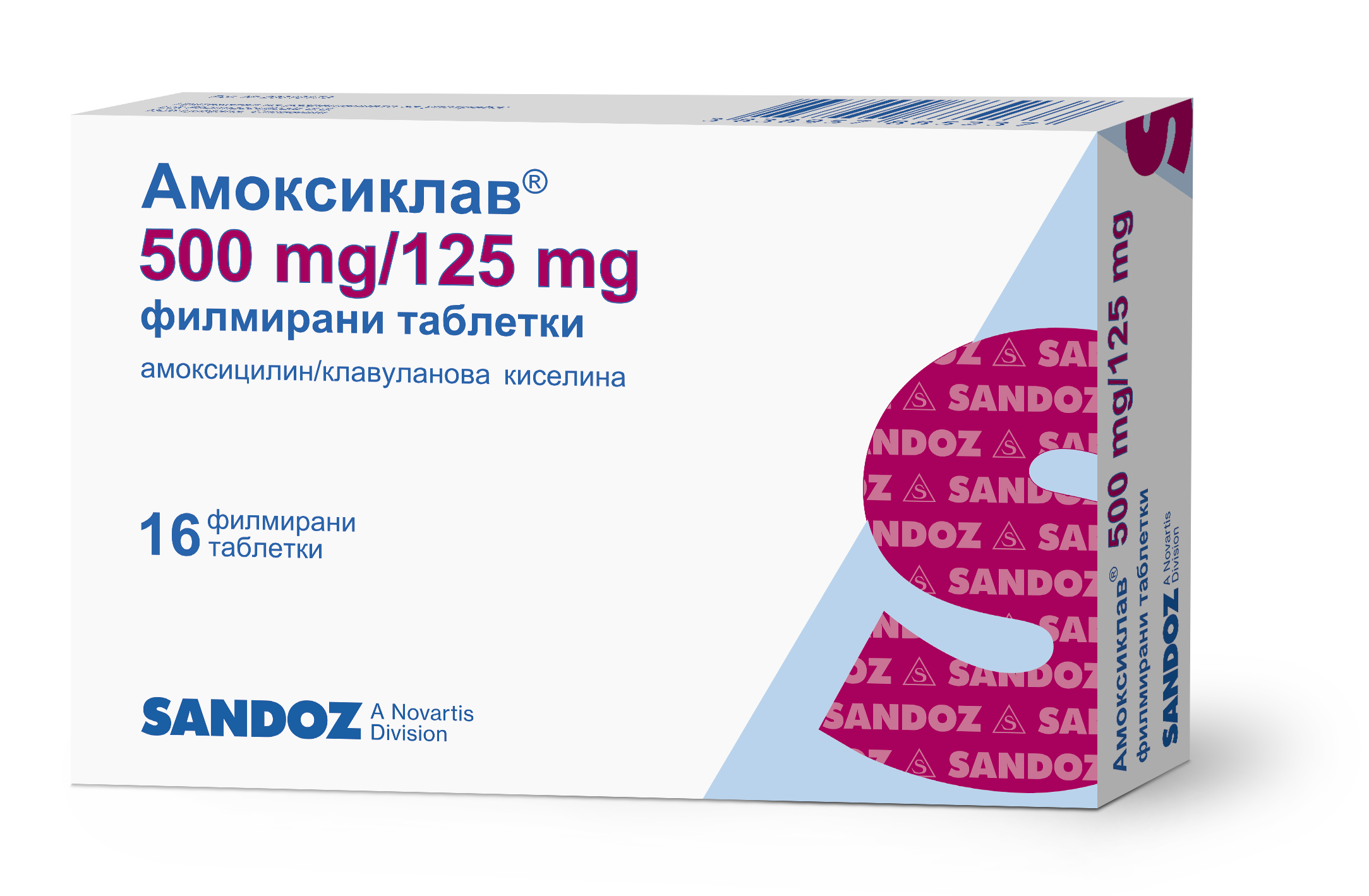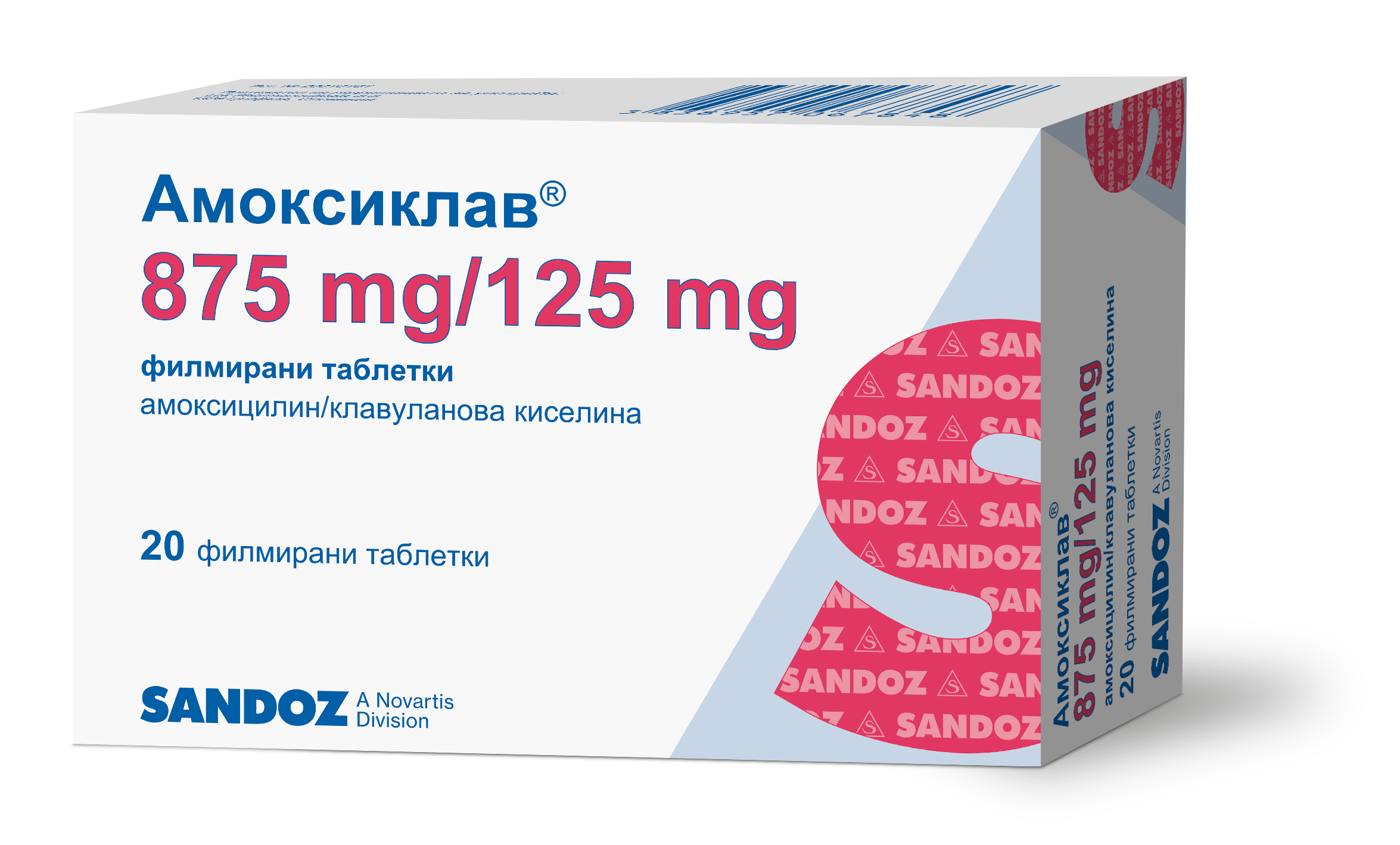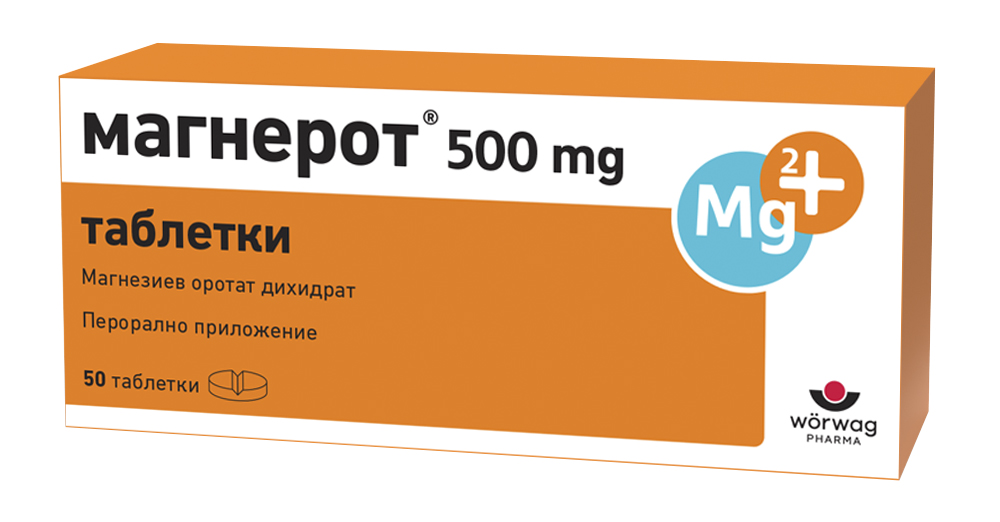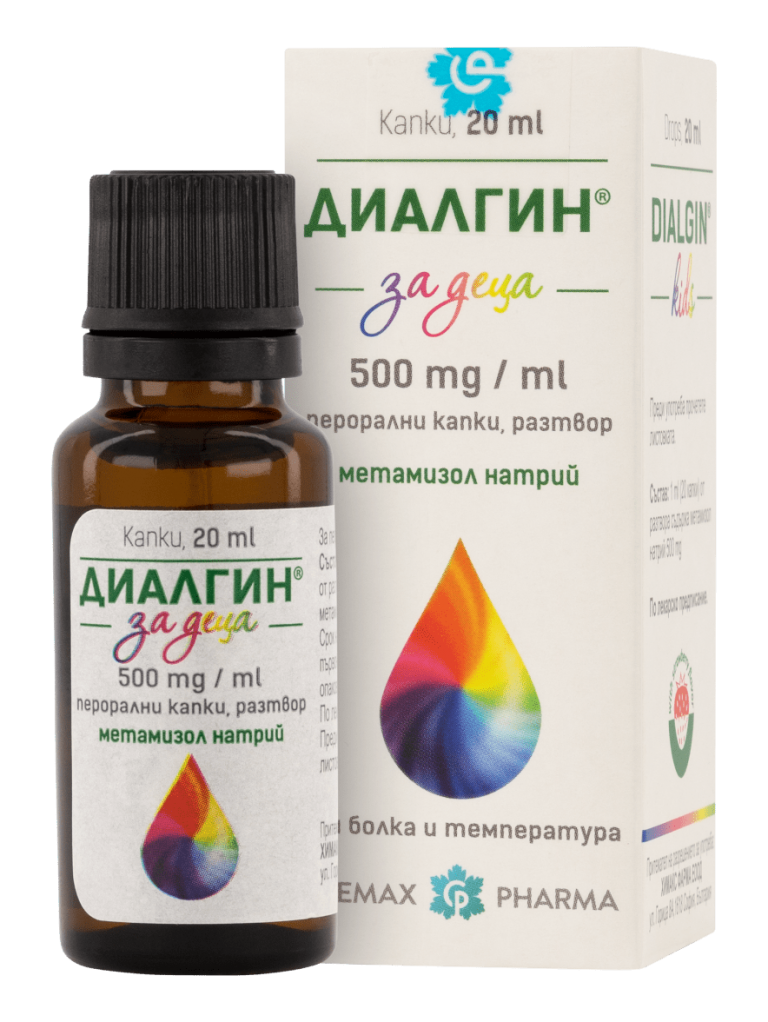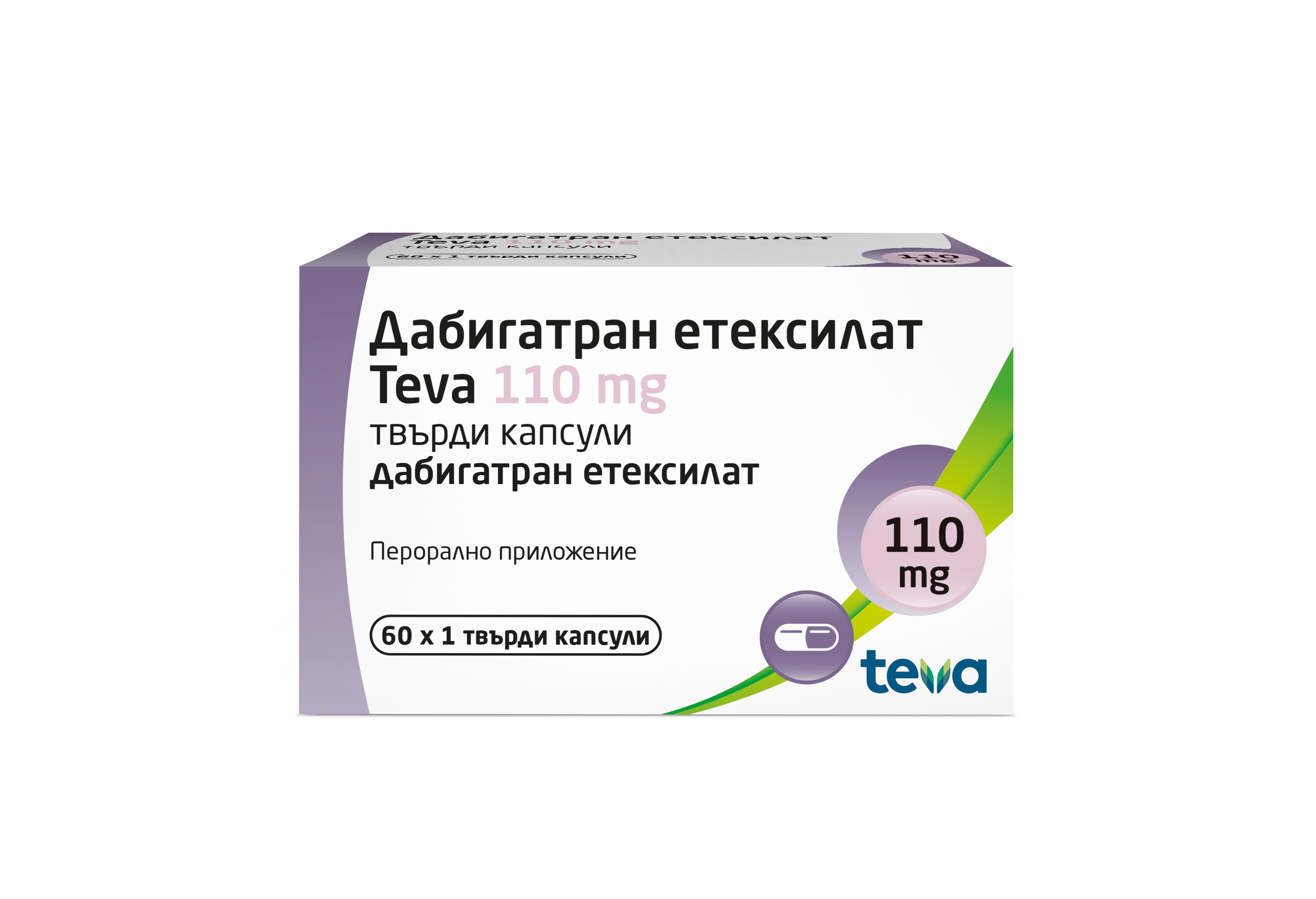AMOKSIKLAV 125mg/31.25mg/5ml 100ml susp
Leaflet: information for the user
A moxiclav 1 2 5 mg /31, 25 mg /5 ml powder for oral suspension
A moxiclav 250 mg / 62.5 mg / 5 ml powder for oral suspension
Amoksiklav 1 2 5 mg /31, 25 mg /5 ml powder for oral suspension
Amoksiklav 250 mg / 62.5 mg / 5 ml powder for oral suspension
Amoxicillin/clavulanic acid
( Amoxicillin / clavulanic acid )
Read all of this leaflet carefully before you start taking this medicine because it contains important information for you.
- Keep this leaflet. You may need to read it again.
- If you have any further questions, ask your doctor or pharmacist.
- This medicine has been prescribed for your child. Do not pass it on to others. It may harm them, even if their symptoms are the same as your child's.
- If any of the side effects gets serious, or you notice any other side effects not listed in this leaflet, please tell your doctor or pharmacist. See section 4.
What this leaflet contains :
- What Amoxiclav is and what it is used for
- What you need to know before you take Amoxiclav
- How to give Amoxiclav
- Possible side effects
- How to store Amoxiclav
- Package contents and additional information
1. What A moxiclav is and what it is used for
Amoxiclav is an antibiotic and works by killing the bacteria that cause infections. It is effective against a wide range of bacteria.
It contains two different medicines called amoxicillin and clavulanic acid. Amoxicillin belongs to a group of medicines called ‘penicillins’, which can sometimes stop working (become inactive). The other active ingredient (clavulanic acid) prevents this from happening.
Amoxiclav powder for oral suspension is used in babies and children, less often in adults, to treat the following infections:
- middle ear and sinus infections,
- respiratory tract infections,
- urinary tract infections,
- skin and soft tissue infections, including dental infections
- bone and joint infections.
2. What you need to know before you are given A moxiclav
Do not give Amoxiclav to your child:
- if you are allergic to amoxicillin, clavulanic acid or any of the other ingredients of this medicine (listed in section 6).
- if you have had a severe allergic reaction (hypersensitivity reaction) to another antibiotic. This may include a skin rash or swelling of the face or neck.
- if you have had liver problems or jaundice (yellowing of the skin) while taking an antibiotic.
Do not give your child Amoxiclav if any of the above apply to your child. If you are not sure, talk to your child's doctor or pharmacist before giving your child Amoxiclav.
Warnings and precautions
Talk to your doctor or pharmacist before giving your child this medicine if they:
- has glandular fever
- has been treated for liver or kidney problems
- not urinating regularly
If you are not sure if any of the above applies to your child, talk to your doctor or pharmacist before giving him Amoxiclav.
In some cases, the doctor may test the type of bacteria causing your child's infection. Depending on the results, your child may be given Amoxiclav with a different strength of the active substance or a different medicine.
Conditions to watch out for
Amoxiclav may make some existing conditions worse or cause serious side effects. These include allergic reactions, fits (seizures) and inflammation of the colon. You should look out for certain symptoms while your child is taking this medicine to reduce the risk of problems. See “ Conditions to look out for” in section 4 .
Blood or urine tests
If your child is having blood tests (such as red blood cell count or liver function tests) or urine tests, tell the doctor or nurse that your child is taking Amoxiclav. This is because Amoxiclav may affect the results of these tests.
Other drugs and Amoxiclav
Please tell your doctor or pharmacist if your child is taking or has recently taken any other medicines, including medicines obtained without a prescription and herbal medicines.
Specifically, you should consult your doctor if your child is taking any of the following medications:
- allopurinol (for the treatment of gout) may be more likely to cause an allergic skin reaction,
- probenecid (used to treat gout): your doctor may decide to adjust the dose of Amoxiclav,
- medicines that prevent blood clots (such as warfarin): additional blood tests may be needed,
- methotrexate (used to treat cancer or rheumatic diseases): Amoxiclav may affect the way it works,
- mycophenolate mofetil (used to suppress the immune system in transplants): close clinical monitoring is necessary during co-administration with the antibiotic and for a short period afterwards.
Pregnancy, breastfeeding and fertility
If you are pregnant or breast-feeding, think you may be pregnant or are planning to become pregnant, ask your doctor or pharmacist for advice before using this medicine.
The possibility of increased sensitivity should be taken into account.
This medicinal product contains sodium.
This medicine contains less than 1 mmol sodium (23 mg) per 5 ml, that is to say essentially 'sodium-free'.
The strawberry flavor in Amoxiclav 1 2 5 mg / 31.25 mg / 5 ml powder for oral suspension contains propylene glycol and benzyl alcohol.
If your baby is under 4 weeks old, talk to your doctor or pharmacist before giving this medicine, especially if the baby is being given other medicines that contain propylene glycol or ethanol.
Benzyl alcohol can cause allergic reactions.
Benzyl alcohol is associated with a risk of serious side effects, including breathing problems (called “choking syndrome”) in young children. Do not use in newborns (up to 4 weeks of age) unless recommended by your doctor.
Do not use for more than one week in young children (under 3 years of age) unless recommended by your doctor or pharmacist.
Ask your doctor or pharmacist for advice if you are pregnant or breast-feeding, as large amounts of benzyl alcohol can build up in your body and may cause a side effect (called “metabolic acidosis”).
Ask your doctor or pharmacist for advice if you have kidney or liver disease, because large amounts of benzyl alcohol can build up in your body and may cause a side effect (called “metabolic acidosis”).
3. How to give Amoxiclav
Dosage
Always take Amoxiclav exactly as your doctor has told you. If you are not sure, ask your doctor or pharmacist.
Adults and children weighing 40 kg or more | This suspension is not usually recommended for adults and children weighing 40 kg or more. Ask your doctor or pharmacist for advice. |
Children weighing less than 40 kg | All doses are determined depending on the child's body weight in kilograms. Your doctor will tell you how much medicine you should give your baby or child. • A measuring device is provided for dosing and administering the suspension (1 measuring device delivers 5 ml). You should use this to give the correct dose to your baby or child. Usual dose - 20 mg/5 mg to 60 mg/15 mg for each kilogram of body weight per day, divided into three doses. |
Patients with kidney and liver problems
- If your child has kidney problems, the dose may be reduced. different strength of the active substance or a different medicine. Your doctor may choose a different strength of the active substance or a different medicine.
- If your child has liver problems, blood tests may be done more often to see how their liver is working.
How to give A moxiclav
- Always shake the bottle well before each dose.
- Give the dose at the beginning of a meal or shortly before.
- Divide doses evenly throughout the day, at least every 4 hours. Do not take 2 doses in 1 hour.
- Do not give your child Amoxiclav for more than 2 weeks. If your child still feels unwell, you should take him to the doctor again.
If you give your child more Amoxiclav than he or she should
If you give your child more Amoxiclav than prescribed, symptoms may include gastrointestinal upset (nausea, vomiting and diarrhoea) or fits. Consult your child's doctor as soon as possible. Take the bottle of medicine to show the doctor.
If you forget to give Amoxiclav
If you miss a dose, give it to your child as soon as you remember. Do not give your child the next dose too soon, but wait about 4 hours before giving the next dose.
If your child stops taking Amoxiclav
Continue to give your child Amoxiclav until the treatment is finished, even if he or she feels better. Your child needs every dose to help fight the infection. If some bacteria survive, they may cause the infection to come back.
If you have any further questions on the use of this product, ask your doctor or pharmacist.
4. Possible side effects
Like all medicines, Amoxiclav can cause side effects, although not everybody gets them. The side effects listed below may occur with this medicine.
Conditions to watch out for
Allergic reactions
- skin rash
- inflammation of the blood vessels ( vasculitis ), which may appear as raised red or purple spots on the skin, but can also affect other parts of the body
- fever, joint pain, swollen lymph nodes in the neck, armpits, or groin
- swelling, sometimes of the face or mouth (angioedema), causing difficulty breathing
- collapse.
→ Contact a doctor immediately if your child experiences any of these symptoms. Stop taking Amoxiclav
Inflammation of the colon
Inflammation of the colon, causing watery diarrhea usually with blood and mucus, abdominal pain and/or high fever.
→ Contact your doctor as soon as possible for advice if your child has these symptoms.
Common side effects:
These may affect up to 1 in 10 people
- thrush (candida - a fungal infection of the mouth, vagina, or skin folds)
- nausea, especially when taking high doses
→ If this happens, Amoxiclav should be taken before meals
- vomiting
- diarrhea
Uncommon side effects
These may affect up to 1 in 100 people
- skin rash, itching
- raised itchy rash (hives)
- indigestion
- dizziness
- headache
Uncommon side effects that may show up in blood tests:
- increased levels of certain substances in the blood ( enzymes ) produced by the liver.
Rare side effects:
They may affect up to 1 in 1,000 people
- skin rash that may be blister-like and look like small targets (central dark spots surrounded by a paler area, with a dark ring around the edge - erythema multiforme).
→ If you notice any of these symptoms, contact a doctor immediately .
Rare side effects that may show up in blood tests:
- low number of cells involved in blood clotting
- low white blood cell count (reversible).
Other side effects :
Other side effects have been seen in a very small number of people, but their exact frequency is not known.
- Growth of microorganisms that are insensitive to the antibiotic.
- Allergic reactions (see above)
- Inflammation of the colon (see above)
- Serious skin reactions:
- widespread rash with blisters and peeling skin, especially around the mouth, nose, eyes and genitals (Stevens-Johnson syndrome), as well as a more severe form causing extensive peeling of the skin (more than 30% of the body surface - toxic epidermal necrolysis )
- widespread red skin rash with small blisters containing pus ( bullous exfoliative dermatitis )
- red, scaly rash with bumps under the skin and blisters (exanthematous pustulosis).
- flu-like symptoms with rash, fever, swollen glands and blood test results that are outside the reference range (including increased levels of white blood cells (eosinophilia) and liver enzymes) (Drug Reaction with Eosinophilia and Systemic Symptoms (DRESS)).
→ Contact a doctor immediately if your child experiences any of these symptoms.
- inflammation of the liver (hepatitis)
- jaundice, caused by an increase in bilirubin in the blood (a substance produced in the liver), which can make your child's skin and the whites of their eyes look yellow
- inflammation of the tubes in the kidneys
- longer blood clotting time
- hyperactivity
- seizures (in people taking high doses of Amoxiclav or who have kidney problems)
- meningitis (inflammation of the brain membranes)
- a black tongue that looks hairy
- Tooth staining (in children), usually removed with a brush.
Side effects that may show up in blood or urine tests:
- severe decrease in white blood cell count
- low red blood cell count (hemolytic anemia)
- crystals in the urine (urine may become cloudy and urination may be difficult and painful).
If any of the side effects gets serious, or you notice any other side effects not listed in this leaflet, please tell your doctor or pharmacist.
Reporting side effects
If you get any side effects, talk to your doctor, pharmacist or nurse. This includes any possible side effects not listed in this leaflet. You can also report side effects directly via the national reporting system at the Bulgarian Medicines Agency, 8 Damyan Gruev Street, 1303 Sofia, tel.: + 359 2 890 34 17, website: www.bda.bg. By reporting side effects, you can help to provide more information on the safety of this medicine.
5. How to store Amoxiclav
Keep out of the reach of children .
The powder for oral suspension should be stored below 25°C in a dry place.
The prepared suspension should be stored in a refrigerator (at a temperature of 2 to 8°C) and used within 7 days after preparation.
The bottle should be shaken well before each use.
Close the bottle tightly immediately after use.
Do not use Amoxiclav after the expiry date which is stated on the carton. The expiry date refers to the last day of that month.
Medicines should not be thrown away via wastewater or household waste. Ask your pharmacist how to dispose of medicines you no longer need. These measures will help protect the environment.
6. Contents of the pack and other information
What Amoxiclav contains
The active substances are amoxicillin and clavulanic acid. Each 5 ml of oral suspension (1 measuring device) contains 125 mg or 250 mg of amoxicillin, as amoxicillin trihydrate, and 31.25 mg or 62.5 mg of clavulanic acid, as potassium clavulanate.
The other ingredients are:
Amoxiclav 1 2 5 mg /31, 25 mg /5 ml powder for oral suspension
Anhydrous citric acid, sodium citrate, microcrystalline cellulose, carmellose, sodium benzoate, xanthan gum, colloidal anhydrous silica, silicon dioxide, strawberry flavor, saccharin sodium, mannitol.
Amoxiclav 250 mg /62.5 mg /5 ml powder for oral suspension
Anhydrous citric acid, sodium citrate, microcrystalline cellulose, carmellose, sodium benzoate, xanthan gum, colloidal anhydrous silica, silicon dioxide, cherry flavor, saccharin sodium, mannitol.
What A- moxiclav looks like and contents of the pack
The powder for oral suspension is a white to yellowish-white crystalline powder.
Pack containing a vial of 25 mg powder for preparation of 100 ml oral suspension (measuring device provided).
Marketing Authorisation Holder:
Lek Pharmaceuticals dd Verovškova 57, Ljubljana, Slovenia
Manufacturers:
Lek Pharmaceuticals dd Verovškova 57, Ljubljana, Slovenia
Lek Pharmaceuticals dd, Perzonali 47, 2391 Prevalje, Slovenia
Date the leaflet was last revised
MM/YYYY
Advice/medical education
Antibiotics are used to treat infections caused by bacteria. They have no effect against infections caused by viruses.
Sometimes an infection caused by bacteria does not respond to treatment with a given antibiotic. One of the most common reasons for this is that the bacteria causing the infection are resistant to the antibiotic being taken. This means that they can survive and even multiply despite the antibiotic.
Bacteria can become resistant to antibiotics for many reasons. Careful use of antibiotics can help reduce the likelihood that bacteria will become resistant to them.
When your doctor prescribes an antibiotic, it is intended to treat only your current illness. Pay attention to the following tips to help prevent the development of resistant bacteria that can stop the antibiotic from working.
1. It is very important to take the antibiotic in the right dose, at the right time, and for the right number of days. Read the instructions on the label, and if you do not understand anything, ask your doctor or pharmacist to explain.
2. You should not take an antibiotic unless it is specifically prescribed for you and you should only use it to treat the infection for which it was prescribed.
3. You should not take antibiotics that have been prescribed to other people, even if they had an infection similar to yours.
4. You should not give antibiotics that are prescribed for you to other people.
5. If you have any antibiotics left over when you have finished the course as directed by your doctor, you should take the remainder to the pharmacy to be disposed of appropriately .
-----------------------------------------------------------------------------------------------------------------------------
Instructions for preparing the suspension
The finished suspension is off-white to yellow, homogeneous.
Before use, check the integrity of the cap seal. Shake the bottle to disperse the powder. Add water (as indicated below) in two portions (first to 2/3 and then to the mark) and shake well after each addition of water. Shake the contents of the bottle well before each use.
Volume of water to be added when preparing the suspension (ml) | |
Amoxiclav suspension 125 mg/31.25 mg/5 ml | 86 |
Amoxiclav suspension 250 mg/62.5 mg/5 ml | 85 |
Lek Pharmaceuticals d . d . is part of the company


